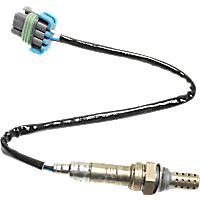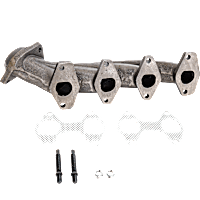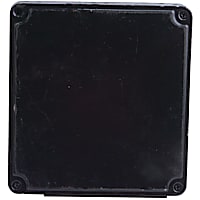If you have a scan tool or code reader, you may connect it to your vehicle’s OBD port to retrieve the error code. One example of an OBD code that may appear on various makes and models is engine code P0050.
What Does the P0050 Code Mean?
Diagnostic Trouble Code (DTC) P0045 stands for “HO2S Heater Control Circuit Bank 2 Sensor 1.” This code gets logged once the PCM detects a potential fault with the bank 2 sensor 1 heater circuit. Bank 2 refers to the side of the engine that does not contain cylinder #1.

Oxygen sensorsmeasure the amount of oxygen in the exhaust. They send data to the vehicle’s PCM, which adjusts the air-fuel ratio accordingly. A conventional oxygen sensor will only send a voltage signal once its tip reaches a temperature of about 527°F.
These sensors need to stay at a certain temperature in order to relay accurate data to the PCM. To achieve a heated state, oxygen sensors equip a heater wire to quickly raise their temperature. This shortens the time it takes for the engine to operate in closed loop.
Once the PCM detects a potential fault in the heater wire in bank 2 sensor 1, it may set this code.
If you need more help locating bank 2 sensor 1, read our guide about bank 1 vs bank 2.

Note: The definition of code P0050 may be different depending on the vehicle manufacturer. Consult the appropriate repair manual or repair database for the exact code definition.
What are the Possible Causes of the P0050 Code?
Here are some possible triggers of the P0050 code:
- Faulty heated oxygen sensor
- An issue with the oxygen sensor heater circuit
- Malfunctioning PCM
What are the Common Symptoms of the P0050 Code?
Here are some of the common symptoms you should watch for in relation to the code:
- Check engine light is on
- Decreased fuel efficiency
- Decreased engine performance

How to Diagnose the P0050 Code
Diagnosing the P0050 code isn’t easy. If you’re not an experienced DIYer, it is best to bring your vehicle to a mechanic. They will have the right tools and know-how to properly identify the root cause of the problem.
However, if you’re determined to diagnose this code yourself, here’s a video that may give you an idea of what the diagnostic procedure might involve:
How to Fix the P0050 Code
Although P0050 is a generic code, the appropriate diagnostic and repair strategies may vary depending on your vehicle’s year, make, and model. For example, repair procedures for a P0050 Chevycode may prove different from an AudiP0050 code.
If you decide to fix this code yourself, we recommend consulting a vehicle-specific repair manual. You may also subscribe to an online repair database to help you identify the appropriate repair procedure for your vehicle. Alternatively, you may go to an auto shop to get your vehicle fixed.
Where to Get a New Oxygen Sensor to Resolve the P0050 Code
Compromised engine performance is the last thing anybody wants to happen to their vehicle. In some cases, the issue can be caused by something as simple as a faulty oxygen sensor.
Don’t give yourself a hard time combing through every auto parts store in your area to find a suitable replacement. We’ve got exactly what you need here at CarParts.com, and the best part is that you don’t have to move an inch from where you’re sitting to buy it.
We only offer top-notch oxygen sensors on our website, so you can rest assured that you’ll get one that’s built to last. All our products pass strict quality checks from industry professionals, ensuring maximum durability and dependability.
It only takes a few clicks to find what you need. Enter your vehicle’s specifications into our website’s vehicle selector to start browsing for compatible oxygen sensors for your daily driver. You can also use the search filters to find a product according to your preferred brand, price range, and more.
Order now, and we’ll deliver the part you need straight to your doorstep in as fast as two business days. Check out our catalog and shop for a new oxygen sensor today to clear the P0050 code in no time!
Products Mentioned in this Guide
Any information provided on this Website is for informational purposes only and is not intended to replace consultation with a professional mechanic. The accuracy and timeliness of the information may change from the time of publication.


 Oxygen Sensor
Oxygen Sensor
 Exhaust Manifold
Exhaust Manifold
 Engine Control Module
Engine Control Module
















